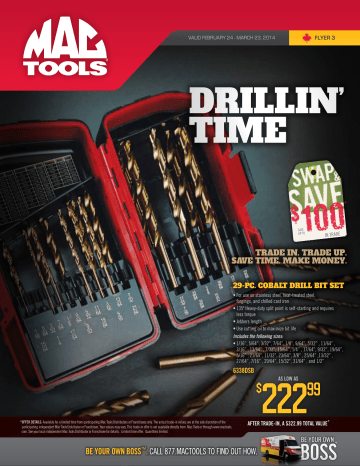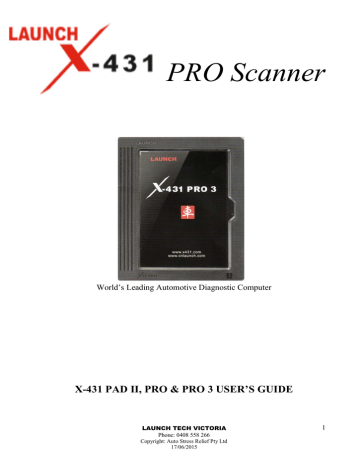Learn how Other Scan Tools can make your job easier and save you time. Professional mechanics and auto techs #1 trusted source for automotive repair tools. Choosing a selection results in a full page refresh. Press the space key then arrow keys to make a selection. Use left/right arrows to navigate the slideshow or swipe left/right if using a mobile device. The J2534 driver must be downloaded to your PC to allow communications with the VCI. The MDT 10 Installation Instructions and MDT 10 Software file can be downloaded using the links on this page. The J2534 driver must be downloaded to your PC to allow communications with the VCI. The MDT 10 Installation Instructions and MDT 10 Software file can be downloaded using the links on this page.
By Dave Jankowski, product sales leader at GE Inspection Technologies

Ultrasonic phased-array corrosion mapping assists in quickly scanning, detecting, profiling and sizing of pitting and erosion in pipes and tanks. Encoded scanning data allows a high degree of repeatability and ensures 100% coverage to compare asset conditions and track corrosion rates over time.
Conducting accurate, precise corrosion inspection takes more than just an ultrasonic flaw detector or A-scan thickness gauge– selecting a scanner, probe and accessory configuration for your application is a critical part of inspection planning. The right setup can make or break your inspection.
The NDT equipment industry offers a variety of scanners and probes to improve inspection productivity when mapping large surfaces for wall thickness and metal loss. This is a snapshot of the technologies available and their recommended applications.

Robotic and Motorized Scanners
Robotic or motorized corrosion scanners, such as Fast UT from GE Inspection Robotics, are particularly useful for inspection in confined spaces or overhead pipe runs, where it is unsafe or impractical to introduce a live inspector. During a maintenance turnaround where time is critical, it is often desirable to avoid the time delays and costs associated with ventilation, rigging, scaffolding or hole watch. The use of a robotic scanner or crawler can pay for itself in a single turnaround.
When selecting a robotic scanner, it’s important to ensure compatibility with your existing UT flaw detector, and to ensure that the device is certified as intrinsically safe when it will be operating in highly hazardous environments.
Manual Scanners


Manual scanners operate in much the same way as a motorized scanner, but with the requirement of a live inspector to physically move and operate them. Because they have fewer moving parts they can be very reliable. However to ensure accurate encoding of the scanned surface area, they require strong magnets and precision mechanics. It is advisable to train operators on manual scanning carefully to ensure consistent procedures.
High quality UT instruments such as GE’s Mentor UT are compatible with a variety of commercially available aftermarket scanners and robotic systems to meet virtually any corrosion mapping need.
DM Array Probes
Mentor Scanner Manual Pdf
For corrosion inspection and mapping, it is recommended to use a multi-element array probe, such as GE’s DM phased array probes. They provide comprehensive linear coverage and excellent resolution of backwall corrosion and pitting. Curved or flat wear bars can be added to the probes to extend probe life, ensure alignment, and aid acoustic coupling to the inspection surface. The larger surface area of multi-element probes allows inspectors to cover more surface area faster, and an advanced C-scan image display provides a visual representation of wall thickness loss.
Because corrosion mapping often takes place in challenging field conditions or at high temperatures, it’s important to consider the quality of probe construction when choosing a probe supplier.
Conventional DM Probes

When initial corrosion mapping of a pipe or tank wall identifies irregularities, inspectors are often called on to conduct more specific point inspections or thickness measurements using conventional UT. To maximize inspector productivity, the best phased array UT instruments are equipped with a conventional channel so these spot-checks can be conducted with the same instrument.
Conventional dual element transducers are recommended for spot-checking and measuring remaining wall thickness in corrosion application. Dual element transducers generate sound waves with one element and receive with another – in a ‘V-path’ orientation, which increases sensitivity when examining corroded or pitted back walls.
Software
For productive and precise corrosion inspection, software can be just as important as probe and scanning hardware. Today a new generation of “app-based” UT flaw detectors operate much like a smartphone, allowing users to customize their device interface and build error-reducing guided inspection procedures. These “apps” can automatically identify compatible probes, improve calibration consistency and lock-out unnecessary device parameters, ensuring more reliable and repeatable inspection data. In addition, remote collaboration and live streaming via wireless internet streamlines reporting and allows experts to offer second opinions on tough inspection calls.
With the right combination of probes, scanners, software and accessories, today’s NDT inspectors are speeding up corrosion inspections and improving accuracy.
Learn more about GE’s newest ultrasonic corrosion mapping instrument atwww.mentorut.com and download our popular corrosion inspection probe and scanner configuration guide at:https://www.gemeasurement.com/download/mentor-ut-probe-scanner-and-accessory-guide
Mentor Scanner Manual
Dave Jankowski is the NDT Portable Products Sales Leader for GE Inspection Technologies. He holds a masters’ degree in materials engineering from Case Western Reserve University.



